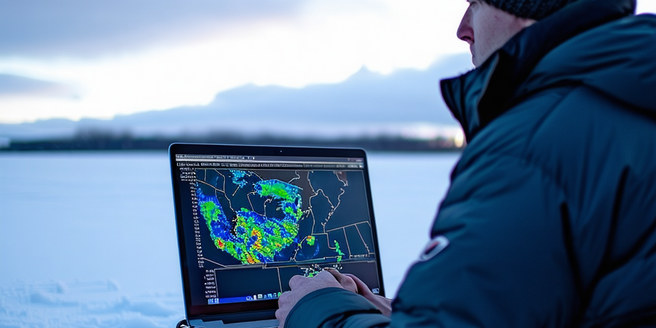
Understanding the Science Behind Extreme Cold
Extreme cold occurs when arctic air masses push southward, bringing frigid temperatures. The science behind extreme cold involves understanding how these jet streams work, and why they cause shifts in weather patterns. The cold air masses originate in the polar regions, where the sun’s rays are weakest. When these air masses move, they are driven by differences in atmospheric pressure, creating what meteorologists call a ‘cold front.’ As these fronts advance, they displace warmer air, leading to a drop in temperature. Scientists study these patterns to predict when and where extreme cold will occur, helping communities prepare for such harsh conditions.
Health Risks Associated with Severe Cold Weather
Severe cold weather poses several health risks, particularly to vulnerable populations such as the elderly and those with pre-existing conditions. Hypothermia is a major concern, occurring when the body loses heat faster than it can produce it, resulting in dangerously low body temperatures. Frostbite is another risk, where skin and tissues freeze due to extreme cold exposure, potentially leading to permanent damage. Cold weather can exacerbate cardiovascular issues, triggering heart attacks due to increased strain on the heart. It’s essential to stay informed about cold weather risks and take appropriate measures, such as dressing warmly and monitoring vulnerable individuals.
How Meteorologists Predict Extreme Cold Warnings
Meteorologists use a variety of tools to predict extreme cold warnings, relying heavily on computer models and satellite data. They analyze atmospheric pressure, temperature, and wind patterns to forecast changes in weather systems. By observing jet streams—which carry cold air masses from polar regions—meteorologists determine the likelihood of extreme cold reaching certain areas. Advanced models simulate weather patterns, enabling predictions several days in advance. Meteorologists also consider historical data and trends to improve accuracy. These predictions are crucial for issuing timely alerts, allowing communities to prepare for incoming cold spells and mitigate potential impacts.
Safety Precautions to Take During Cold Alerts
During cold alerts, safety precautions are vital to protect against the harsh impacts of freezing temperatures. It is important to stay indoors as much as possible and to dress in layers when venturing outside. Wearing a hat, gloves, and scarf can help prevent heat loss. Ensure that your home is well-insulated and that heating systems are functioning correctly. Regularly check on vulnerable family members and neighbors, especially the elderly. It is also advisable to stock up on essentials like food and water, as extreme cold weather can lead to power outages or hinder travel. Being prepared helps reduce risks and ensures safety during severe cold weather.
The Impact of Extreme Cold on Infrastructure and Daily Life
Extreme cold can have significant impacts on infrastructure and daily life. When temperatures plummet, water pipes can freeze and burst, causing costly damage to homes and buildings. Roads become treacherous as ice builds up, leading to dangerous driving conditions and increased accidents. Public transportation may also be disrupted, affecting daily commutes. Power lines are strained under heavy snow and ice, leading to outages that disrupt heating and other essential services. Schools and businesses may close, impacting education and local economies. Being aware of these potential disruptions allows for better preparation and adaptation to cold weather challenges.
Preparing Your Home and Vehicle for Freezing Conditions
Preparing your home and vehicle for freezing conditions is crucial to minimizing the impact of extreme cold. Ensure that your home is insulated to retain heat and that heating systems are serviced to function efficiently. Protect pipes from freezing by insulating them and keeping a small trickle of water running. Stock up on necessary supplies such as food, water, and blankets. For your vehicle, check antifreeze levels, ensure tires have adequate tread or consider winter tires, and keep a winter emergency kit that includes essentials like jumper cables, ice scrapers, and blankets. Regular maintenance and preparation can prevent cold-related emergencies and ensure safety during freezing weather.
